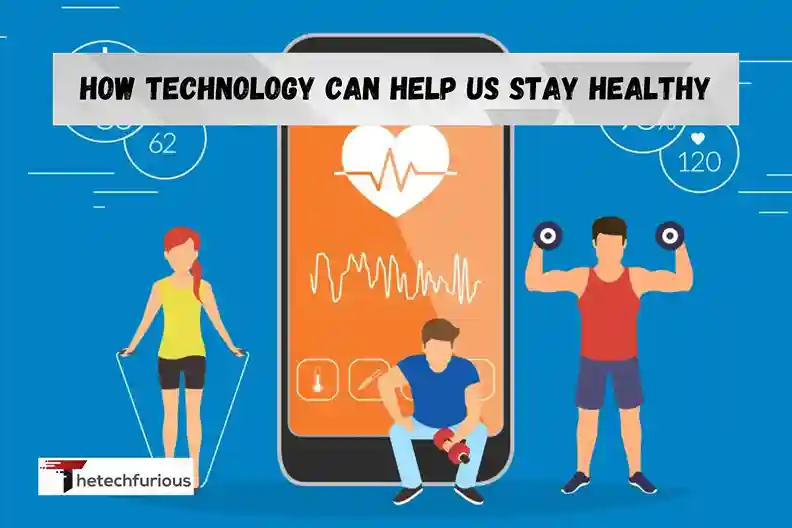What Types Of Diagnostic Devices Are Available?
Diagnostic devices are amongst the most important equipment in today’s health care systems because they are used in the

Diagnostic devices are amongst the most important equipment in today’s health care systems because they are used in the early diagnosis of disease progress tracking and controlling disease breakout.
Used in diagnosis imaging health monitoring screening and disease control these instruments have evolved over the years from traditional simple tools. Such as stethoscopes to sophisticated types of equipment such as machines and portable diagnostic kits among others.
In this blog of thetechfurious the different kinds of diagnostic devices and uses along with their contribution to the enhancement of healthcare services will be examined in this blog post.
Finally, we will be outlining the new developments both nationally and internationally in this line of products, the advantages of using the devices as well as the existing difficulties in the implementation process.
With the knowledge of the importance and developments in the assessment tools one can only gain awareness of the impact on patient care as well as the future of this industry.
Importance of Diagnostic Devices
Diagnostics devices are very much important in today’s need as an essential tool that is used in every field of medicine. The following are points showing the significance of their being some key points highlighted on them.
Detection and Diagnosis
Diagnostic devices help individuals detect diseases or abnormalities early enough to treat or manage to prevent the worst outcomes.
Preventive measures for diagnosis are obligatory for treating patients as the timely diagnosis of diseases will prevent the development of complications and lead to an increase in the rate of survival.
Accurate and Reliable Results
They are very accurate and less hazardous as compared to the manual methods critical for correct diagnosis and treatment planning. This is due to the minimal human interference in diabetic diagnosis which enhances the high accuracy of the diagnostic tools.
Enhanced Patient Monitoring
Diagnostic tools help in the constant supervision of ailments such as diabetes and heart disease. These are especially useful in tracking vital health indicators through wearable devices real-time data can be gleaned thereby enabling timely medical intervention in case of disease manifestations.
Improved Treatment Outcomes
Diagnostic devices are useful in the provision of more concrete details on the health of a patient hence availing ways of advancing the concept of personalized medicine.
Approaching the symptoms of intellectual disability with treatment consideration to their causes results in increased effectiveness of the treatment and improved patient conditions.
Accessibility and Convenience
Point-of-care diagnostic devices for remote and home use provide a way to deliver healthcare facilities and offer timely diagnoses to otherwise unreachable populations.
Smart diagnostic devices for those testing methods facilitate the reduction of recurrent hospitalization thus improving the accessibility to healthcare services.
Types Of Diagnostic Devices

Subsequently, diagnostic devices are undoubtedly mandatory in the present-day systems of medicine. The primary goal of which is to provide the necessary information about the diagnosis and monitoring of diseases. Here are some key types of diagnostic devices most commonly distinguishing diagnostic tools.
Imaging Devices
Imaging devices play a role in the manufacturing of visibility on the body’s inner compound in diagnoses as well as other related diseases.
X-Ray Machines
This modality is usually applied when the interest is in viewing the interior of the body, especially the hard structures and bodies that are packed closely together and in a dense formation.
Resonance Imaging
This is an imaging technology that goes by the name MRI and uses strong magnetic fields and radio waves to obtain several body organs and tissues.
CT scanners
This is through making different viewpoints of X-ray pictures about a given area of the body and then superimposing them to make sectional pictures of the body.
Ultrasound Devices
Diagnostic ultrasound techniques that use high sound wave frequencies are applied in obstetrics and gynecology for instance fetal ultrasound.
Laboratory Diagnostic Devices

These devices are used to find out the state of health of a person or to diagnose ailments that exist in a person where blood urine as well as tissue samples are tested.
Blood Glucose Meters
It can be used to perform readings of blood sugar a very important test for Diabetes
Blood Gas Analyzers
To an extent the efficiency of the lungs the levels of oxygen and carbon dioxide in blood.
Hematology Analyzers
It enables Medical practitioners to inform whether you have a disease such as anemia. A form of infection or leukemia through a count of blood cells.
Automated Biochemistry Analyzers
Perform multiple tests on blood specimens to assess the organ functions of the liver and kidney as well as fruitful metabolic functions.
Cardiovascular Devices
These devices are used to examine or maintain a system that is used in the management of conditions that affect the heart.
(ECG) Machines
This includes observing the electrical impulses of the heart to detect when the heart is beating at the wrong rhythm and other heart complications.
Holter Monitors
Wearable devices that patients take with them so that their heart activity can be monitored for 24 – 48 hours.
Echocardiograms
The technology of ultrasound waves can be utilized to produce images of the heart which will contain information about the heart’s structure and operation.
Neurological Diagnostic Devices

Such devices aid in diagnosing and managing diseases that may affect the nervous system.
(EEG) Machines
A brain activity and any laminas taken through electroencephalogram in case of epilepsy and any neurological illnesses.
(MEG) Scanners
To document the distribution of neuronal activity in the human body to create a map.
Nerve Conduction Studies
Checking the conduciveness of the nerves and measuring the flow and intensity of the electrical signals of the nerves enable the doctor to identify damaged nerves or nerves with reduced functionality.
Wearable & Point-of-care Devices
Such devices make it possible to monitor the patients and conduct tests on the go in settings that are not typically medicated.
Wearable Fitness Trackers
To record the quantity and quality of physical exercise, heart rate or sleep to keep fit and healthy.
Point Testing Devices
Point-of-care devices that give results instantly to either confirm or rule out certain conditions or diseases at the patient’s bedside or from the comfort of their homes examples being pregnancy tests and COVID-19 rapid antigen tests.
CGMs are devices that measure over time.
Monitor glucose levels in real-time and get adequate information for discharging the diabetes control tasks.
Applications Of Diagnostic Devices

When proofs for the hypotheses claim that such or such device is used to fulfill or not to fulfill a certain function one can make a great contribution to enhancing the efficiency of the diagnostic. To improving the patients- and treatment-related outcomes along with to the scientific work on building a healthy society.
Early Disease Detection
This is important in the identification of diseases within the body. The use of diagnostic devices highly improves the condition of the afflicted patient.
These devices have helped use early signs to assist in disease diagnosis and managing the same before complications are reached.
Cancer Screening
They include mammometric examinations wherein tumorous diseases like breast cancer are identified at an early stage colonoscopies. That enable the identification of colon cancer and Pap tests that enable the identification of cervical cancer. They affirm that the early identification of all the stages of the disease improves prognosis and longevity of lives.
Cardiovascular Health
The similarly placed tools that should be used in identifying possible cases of cardiac arrhythmia. Heart diseases and high blood pressure include pulse oximetry ECG monitoring and echocardiography.
This therefore goes to show that if Cardiovascular diseases are detected on time. Then one can be able to avoid having heart attacks or Strokes.
Diabetes Monitoring
Blood glucose meters and prominent HbA1c tests are used in diabetes screening and in controlling diabetes. Therefore, if people undergo proper scrutiny after they are diagnosed with diabetes. They should take the right food, change their exercise pattern as well as take the right medication to balance the glucose levels to avoid complications like neuropathy and retinopathy.
Monitoring Chronic Conditions
Chronic diseases affect the body constantly and therefore need constant checks to ensure that the management plans are modified to fit the current situational analysis. Such devices help make recurrent diagnostic check-ups possible and keep the patient in the healthiest state possible.
Diabetes Management
CGMs constantly give information on blood sugar levels and the patients can independently decide with the help of the doctor on their diet. Physical activity as well as the use of medications.
Hypertension
Home blood pressure monitoring is effective in patient self-management of blood pressure using a home blood pressure monitor. That allows patients to monitor their blood pressure at the appropriate time to prevent hypertension from resulting in stroke or heart disease.
Asthma
Peak flow meters and spirometers are types of equipment used by asthmatic and COPD patients for self-monitoring given adjusting the dosage of medication or identifying triggers.
Guiding Treatment Plans

Diagnostic products allow for getting more detailed data which indicates the specificity of treatment courses based on the patient’s features. This approach is referred to as personalized medicine and improves the outcomes achieved from the treatment.
Personalized Medicine
Pharmacogenomics and molecular medicine are diagnostic techniques that determine a patient‘s genome to assess his/her reaction to specific drugs. This information assists the doctors to decide on the right medication and right dosage and avoid side effects.
Infection Management
Microbiology analyzers also characterize the types of infections that pathogens are involved in. As well as inform on the right antibiotics to be used hence limiting antibiotic resistance.
Cancer Therapy
Used such imaging equipment like MRI and CT scans to measure the tumor size and its reaction to treatment and this guides oncologists on ways to change the therapy to improve on results.
Surgical Assistance
Some devices are useful in carrying out certain surgical procedures. As they act as diagnostic instruments to improve precision and safety among surgical patients.
Preoperative Planning
Different imaging techniques like MRI scan CT scan as well as 3D ultrasound. Ensure that the surgeon has the right model of the structures. That are to be operated on thus developing the best feasible plan of action for the Operating Theatre.
Operative Monitoring
Hand-held ultrasound machines and fluoroscopy imaging systems help the surgeons locate the problematic area while conducting surgery. Hence enhancing precision while minimizing the probable adverse reactions to the surgery.
Public Health Surveillance
Diagnostic devices are very relevant in Public health for instance can be used in identifying and containing diseases as well as in the provision of proper health interventions.
Epidemiological Studies
Diagnostic appliances help in the collection of data about the disease rates and these influence the area of study in epidemiology and other policies impacting the general public.
Infection Control
The use of rapid diagnostic tests in determining the presence of infectious diseases enables prompt isolation together with treatment of the affected individuals to warrant non-transmission to others.
Screening Programs
Screening tests are employed in diseases. That are efficiently transmitted including TB, HIV, and Hepatitis through the use of diagnostic devices to be able to detect the diseases early enough for treatment and control of the spread.
Future Of Diagnostic Devices

Such efficient mechanisms of diagnostics are very helpful for creating new methods of treatment and for the advancement of the healthcare systems and their accessibility and quality.
(AI) And Machine Learning
The dynamic of machine learning within the market of diagnostic devices is considered to be highly important for the improvement of aspects such as accuracy, speed and big data analysis.
Improved Diagnostic Accuracy
Applying AI to medical images and data is beneficial because an AI engine is unlikely to make mistakes. For instance, AI can detect and diagnose beginner-stage diseases such as cancer on scan images much better than conventional techniques.
Predictive Analytics
Such machine learning algorithms can predict the propensity to the occurrence of diseases in patient’s records and genetic makeup in a bid to enhance the practice of health care.
Robotic of Repetitive Activities
There are machines and devices with artificial intelligence. That can perform basic functions of distinguishing diseases from blood tests as well as X-ray machinery thus one would be useful in other aspects.
Internet of Things
The IoT will integrate diagnostic tools in a network. That will allow for efficient monitoring of patients and quick interaction of information among professionals.
Remote Monitoring
Wearable technologies integrated with IoT can measure the patient’s different characteristics like the biomedical data and communicate real-time information to the physicians. With it, there can be timely interventions that are effective for chronic diseases.
Telemedicine
Telemedicine can be supplemented by IoT devices as the latter can offer recent information about the state of the patient’s health. Which contributes to a consultation without a personal meeting.
Interoperability
Interoperability of diagnostic devices with EHRs will be seamless to enable improved efficiency of data integration in the determination of the patient’s health status.
Personalized Medicine
Diagnostic devices will be crucial in delivering personalized medicine in the future pharmaceuticals by dealing with treatments depending on unique patients’ characteristics.
Genetic Testing
Through genetic testing sophisticated devices it will be possible to sequence a patient’s DNA Properly. So that doctors will be able to recommend the right course of treatment for a certain patient.
Biomarker
Some technologies will assist in diagnosing other biomarkers that shall be of benefit in diagnosing diseases. The prognosis of the outcomes and the general treatment framework.
Treatment Plans
Molecular diagnostics are performed for each client developing individual regimens of management based on a patient’s physiology behavior and choice and consequently treating diseases more effectively.
Miniaturization And Portability

It is expect that future diagnostic devices will be compact as a device highly transportable and easy to operate enhancing equality for patients and the health facilities they visit.
Portable Imaging Devices
Handheld ultrasounds and MRI scanners will continue to assist in precise diagnosis at the point of care in other settings like in remote or hard-to-reach areas.
Wearable Health Monitors
Integrated personal wellness monitors will be miniature and worn on the body constantly monitoring health indicators. That will be very useful in continuous health monitoring and early disease diagnosis.
Home Diagnostic Kits
Diagnostic devices kits are design for home use that are scale down will enable the patients or clients to take sample tests and even manage their treatments without the help of clinic attendants.
Improved Clarity And Sensitivity
Future, constant developments in the field of sensors and molecular detection will further enhance the development of better and more sensitive diagnostic instruments.
High-Resolution Imaging
Better technology will give a better picture of the tissues and organs where diseases are known to originate or manifest thus better diagnosis and treatment.
Sensitive Biosensors
The future biosensors will operate on the molecular level and will be capable of identifying diseases based on the levels of biomarkers that are present in the body in trace amounts.
Advanced Molecular Diagnostics
Enabling technologies employed in diagnosis will include the CRISPR-base diagnostics and the next-generation sequencing which are characterize by high sensitivity for identification of genetic mutations as well as infectious agents.
Sustainability and Eco-Friendly Designs
Future diagnostic devices will gradually be design to have an emphasis on sustainability and decrease harm to the environment through manufacturing materials and design.
Eco-Friendly
Biodegradable and recyclable material will be incorporate into the production of the diagnostic device to reduce the amount of harm done to the environment.
Energy Efficiency
Hardware will be create to be power-sensitive and will include functions of renewable power alongside low-power vitality gadgets.
Reduced Waste
Technological improvements like the reusability of the components used and the best method of creating. The products will help cut costs and help in the sustainability of the health sector.
Regulatory and Ethical Considerations
The fact is that in the future with the constant development of diagnostic devices. It will be equally important to fulfill the detailed regulatory and ethical requirements to use these devices safely and efficiently.
Regulatory Approval
Eliminating some of the red tape FDA reviewers use to gear up new diagnostic devices will enable faster delivery of innovations to patients while maintaining quality.
Data Privacy
Preserving patient data and keeping their privacy would remain an important concern with growth in the applications of interconnected and AI-assisted diagnostic tools.
Utilization of artificial intelligence
Setting standards for the employment of ethical AI in diagnosing illnesses will also be require due to biases. The risks of potential unfair outcomes as well as the need for openness regarding the use of these technologies.
Conclusion
Diagnostic devices are the current frontier of comprehensive healthcare and delivery methods, especially in disease detection and management.
These are apparent from primitive tools to modern gadgets. They are essential tools in enhancing patients well-being and the overall performance of the healthcare system.
Nevertheless, despite many difficulties in implementing molecular technologies, diagnostic devices have been consistently improving. The future will see more people receiving individualized accurate and timely treatments with the help of these devices.
Thus, we need to remove obstacles that hinder the wide application of telerobots and ensure. The optimal utilization of these solutions for altering the healthcare system.
Frequently Asked Questions
What are diagnostic devices?
Diagnoses are instruments employe by medical personnel to test screens and identify a sickness or a health complication.
How do diagnostic devices benefit patients?
They give relevant and timely information that helps spread diseases detected and treated in a timely fashion.
What types of diagnostic devices are available?
Examples are image producers such as X-rays Magnetic Resonance Imaging (MRI) machines. Blood glucose testing equipment along with genetic tests among others.
Are diagnostic devices safe to use?
Yes, they are highly standardize and they undergo several tests to improve the safety aspect and make them as accurate as possible.
How is AI use in diagnostic devices?
AI provides means for easier assessment of medical data and images increasing diagnostic efficiency.









